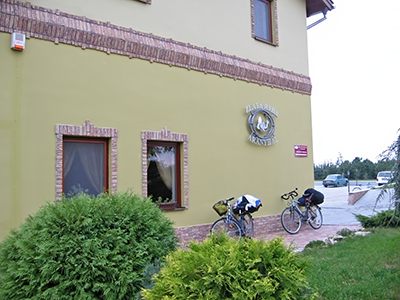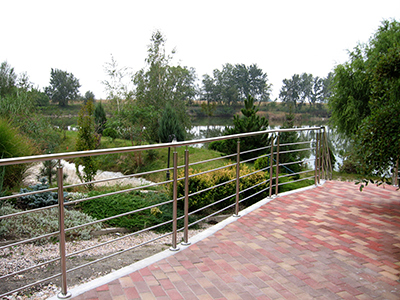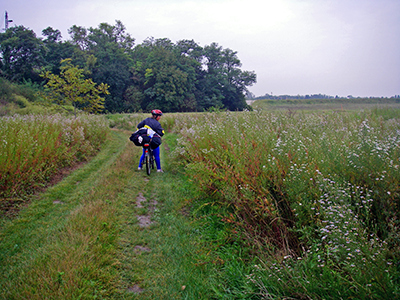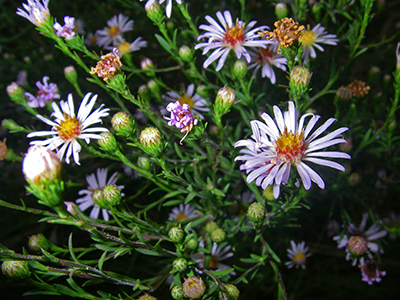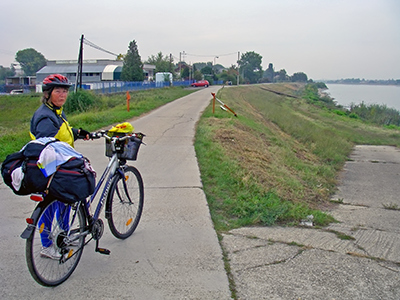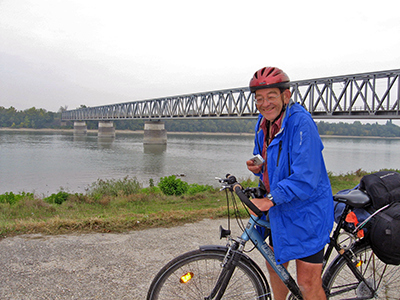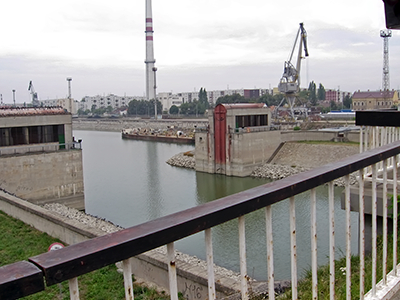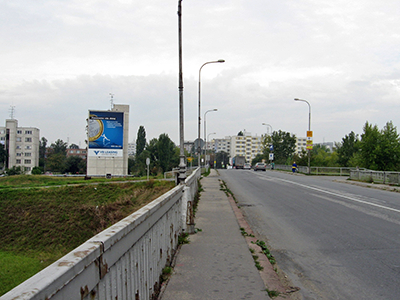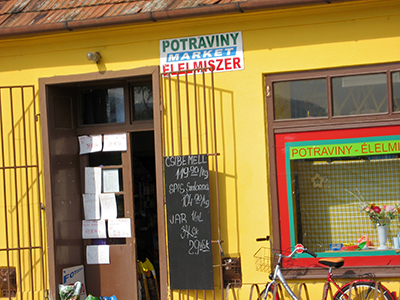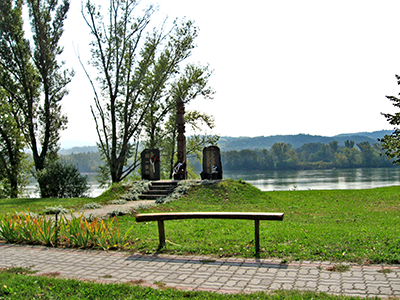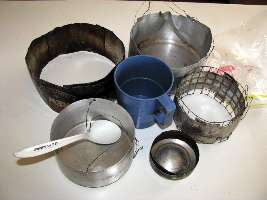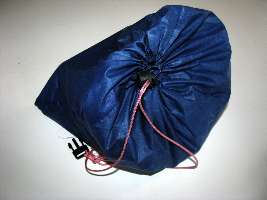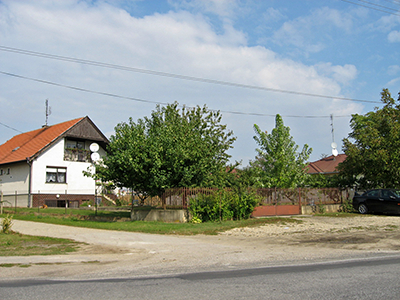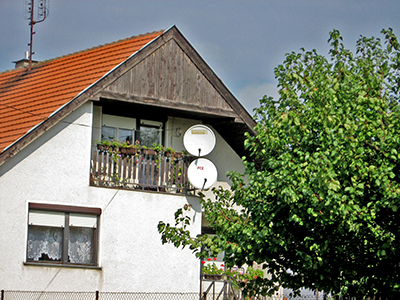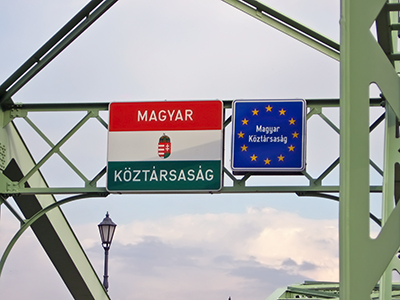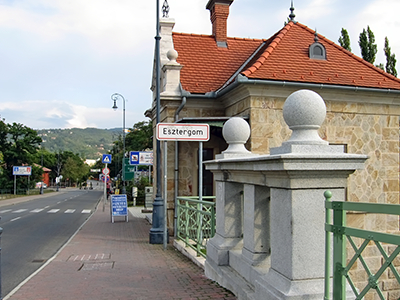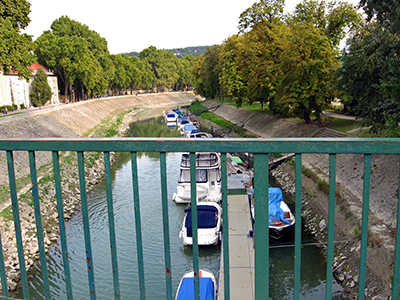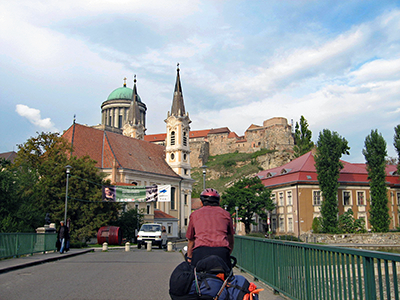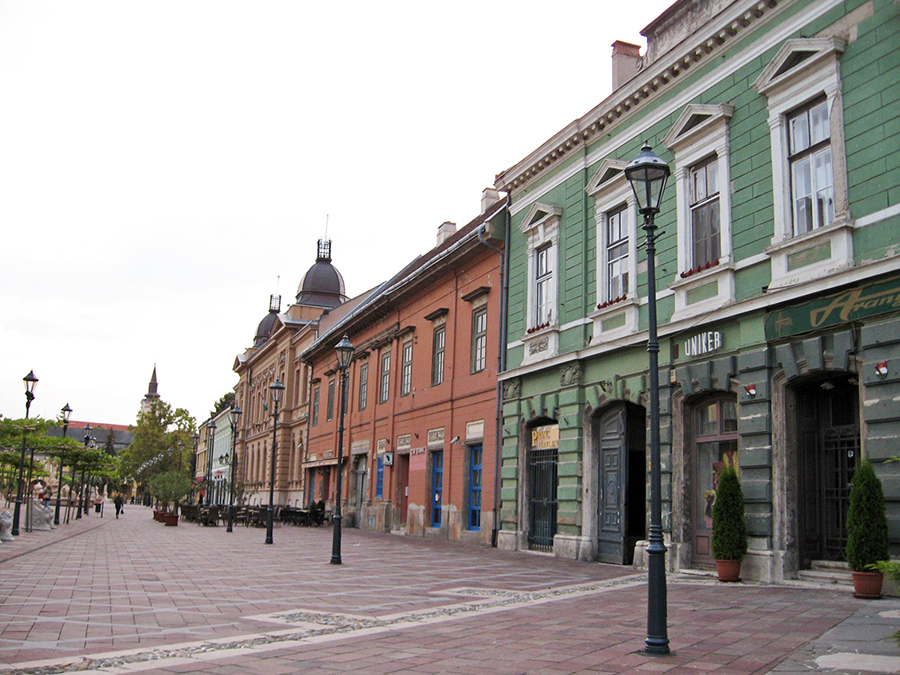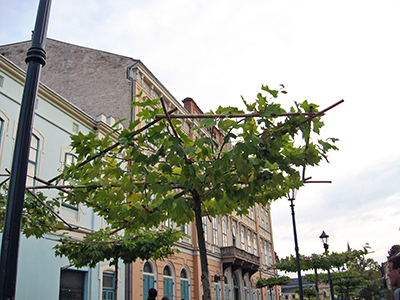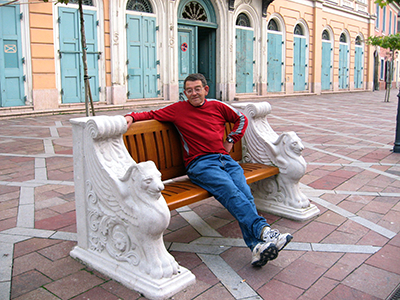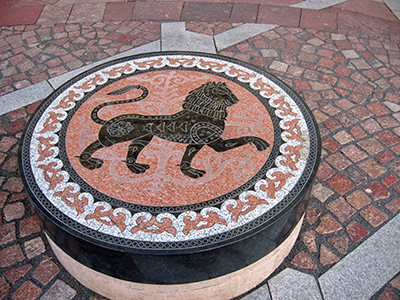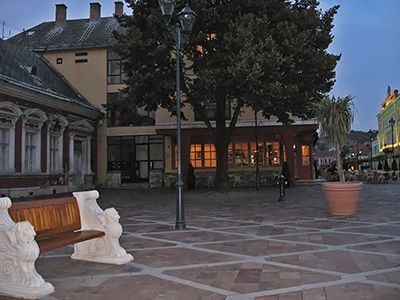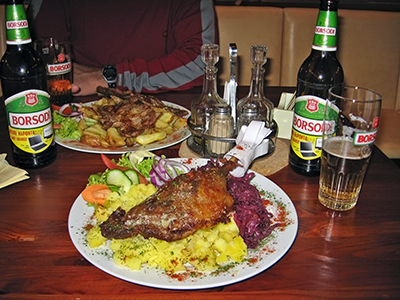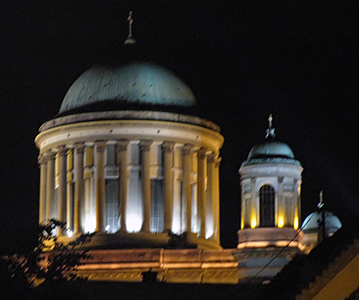Back to Don's Maps
Cycling down the Danube
Day 20, 24th September 2008
Zlatná na Ostrove - Komárno - Iža - Patince - Moča -Kravany - Mužla - Štúrovo - Esztergom
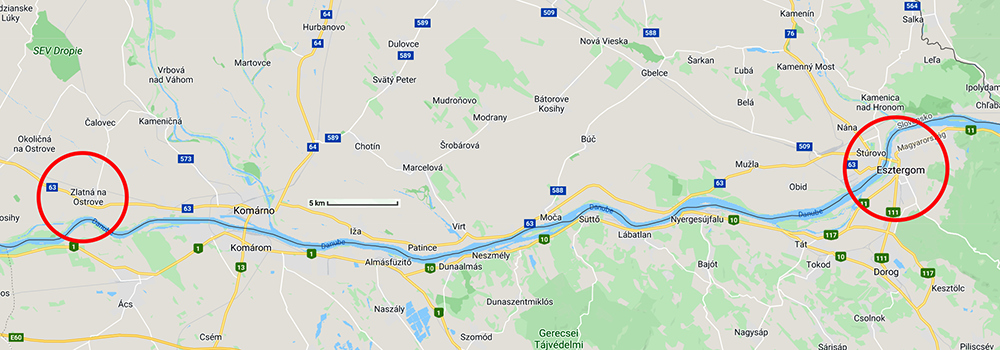
From Zlatná na Ostrove to Esztergom - 66 km ( 1142 km from start)
Photo: Google maps
From Maria's Diary:
Zlatná na Ostrove to Esztergom
Fine - cloudy at first.
Had to wait for kitchen staff to show but then had an excellent scrambled egg breakfast. Took off along the road - good shoulders - at Komárno we took a dirt track to the Radweg then followed it round and through the town to pick up the main road again.
We put the km behind us as we passed through Iža then Patince. We later bought supplies at a MiniMarkt, and had morning tea in a park nearby, then continued to Moča where there were grape vines and holiday houses. The road was quite busy with drivers going much too fast in the built up areas.
It was a fairly hairy day with screaming cars and trucks passing us constantly - we passed through large tracts of farmland.
From Moča we headed through Kravany and met the Donau again a few km on. Here we had lunch on a bit of concrete track but afterwards we continued on our road trip to Mužla and then Štúrovo. We rode through the town to the mall then turned right and left at a roundabout to reach the bridge separating Slovakia from Hungary.
Finally we were in Esztergom - we went to the main drag to get some money then saw a sign for the Pension Alabardos. Got a room for €48, or 11 560 Ft.
By 0800 we were packed up and ready to go - but we had to wait for the chef to show up to cook us breakfast.
The grounds of the Penzion Zlata Ryba (goldfish) were well landscaped and maintained.
Photo: Don & Maria Hitchcock 23rd September 2008
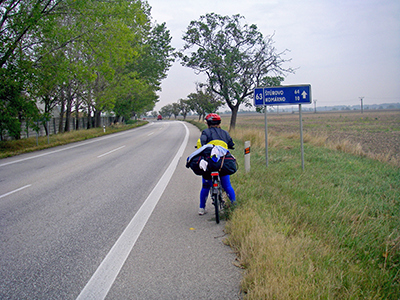
By 0906 we were well on the way to Komárno, on what we found was the best we could expect for the radweg in Hungary - a broad shoulder on a main road. We began to make good time.
Roads have advantages as well as the disadvantages of motor traffic and fumes. They have a usually well maintained and smooth surface, and their gradients are gradual, as opposed to many cycle trails.
In Australia I have seen well meaning local councils put in a 'cycle path' which no one uses, because the surface is poor and narrow, and it goes up and down a lot, whereas the road nearby, with all its traffic, offers a smoother and faster and less tiresome ride.
Photo: Don & Maria Hitchcock 23rd September 2008
We followed the signs down this dirt track through fields of tall daisies, a welcome alternative to the highway. It led to the Radweg proper, at first beside the Donau, and we followed it as a bypass through Komárno and to the main road beyond.
We never got over the difference in light on this trip to that in Australia. The European light was softer, and brought out vibrant colours, whereas the normal Australian light is much harsher, and the colours can be muted.
Photo: Don & Maria Hitchcock 23rd September 2008
Five minutes later we were beside the Donau again, where a railway bridge crossed it.
The railway bridge appeared to have been rebuilt or upgraded, in order to raise its height to allow more room for river traffic, as can be seen from the different colours of bricks on each individual pier in the water.
As can be seen from Maria's clothing, it was still quite cool. We washed our nicks and tops and socks each night, and they dried during the next day's ride (if there was no rain!) by being tied to the backpacks. This system worked very well throughout the whole trip.
Maria is standing in front of the 'Zlatý Bažant', the Golden Pheasant Yachtclub, which advertises that 'Zlatý Bažant', 'Golden Pheasant' beer is available. Zlatý Bažant is the most exported Slovak beer brand.
Photo: Don & Maria Hitchcock 23rd September 2008
We followed the Radweg beside the Donau for 2.5 km, then turned inland towards the CBD of Komárno to meet the major road Lehárova.
We arrived at the Prístav lodenice Komárno, the Komárno shipyards. These photos were taken from the bridge over the water entry leading into this offshoot from the Donau, looking inland. The entrance can be walled off by large gates when necessary if there is very high water from flooding in the Donau.
Photo: Don & Maria Hitchcock 23rd September 2008
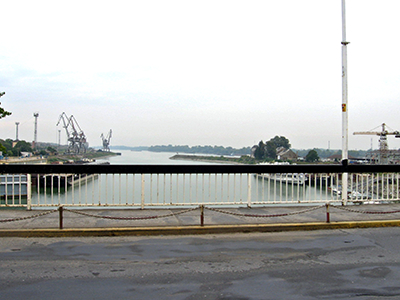
Looking towards the Donau from the bridge.
Photo: Don & Maria Hitchcock 23rd September 2008

When a graveyard occupies increasingly valuable land close to, or within a city, the solution is often to repurpose the land, but to keep the headstones in a safe place near the original church associated with the cemetery.
This is what appears to have taken place here. The headstones are in the grounds of the Pravoslávny Kostol, the Orthodox Church in Komárno.
Photo: Don & Maria Hitchcock 23rd September 2008
(left) Novozámocká cesta, Newcastle Road, on the bridge over the Váh River, looking towards its confluence with the Donau.
(right)..... and looking back across the bridge to the city of Komárno which we were leaving behind at about 1040h.
Photo: Don & Maria Hitchcock 23rd September 2008
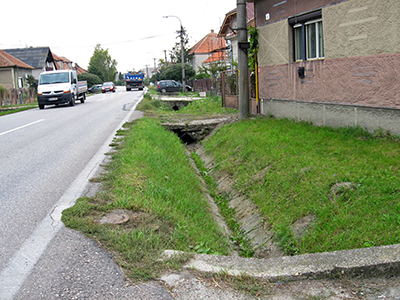
Twenty minutes later, at 1100, we reached Iža. There were no shoulders to this road, and we had to fight it out for road space with cars and trucks.
The deep gutters at the side of the road indicate that they must get heavy rains at times here, or perhaps the gutters are so deep in order to carry away the snowmelt in spring.
Photo: Don & Maria Hitchcock 23rd September 2008
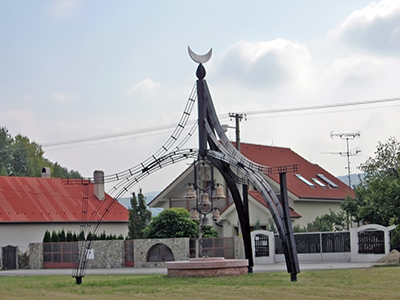
This sculpture at the village of Žitava, municipality of Radvaň nad Dunajom, is to commemorate the Žitavský Peace Treaty.
Žitavský mier was a peace treaty concluded on November 11, 1606 ended the fifteen-year war between the Ottoman Empire and the Habsburg Monarchy. The peace treaty is named after the river Žitavy , at whose mouth the treaty was signed, at what is now the village of Žitava.
Photo: Don & Maria Hitchcock 23rd September 2008
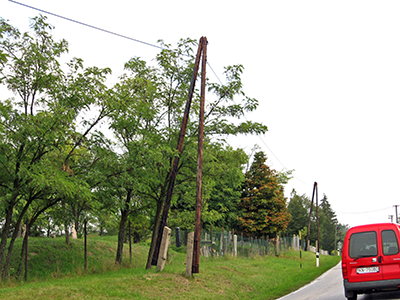
At the next bend in the road was this cemetery with curious telephone/electricity/cable poles in front of it.
Before this section, electricity was carried by tall, wide diameter and well made concrete poles on one side of the road. Within the village, poles were needed on both sides of the road to service the houses.
Wood is a cheap substitute for such limited use poles, and is easily available in the area, but rots in the ground unless treated.
The solution was to bury short concrete poles into the ground, and bolt the two wooden poles to the concrete. By using two poles at an angle, the poles did not need any further bracing against the tension to one side from carrying the cable around the bend.
The poles reverted to a single line of well made, tall concrete poles once the road left the village.
Photo: Don & Maria Hitchcock 23rd September 2008
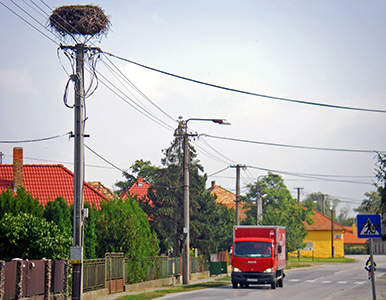
A few minutes later we passed this storks' nest. We saw many of them on this trip, they are built up year by year, often by the same breeding pair. This one has been lifted out of the way of the electricity lines by the linesmen, using steel rods.
It was 1215 by this time, and we sighted a Mini market just up ahead where we could get supplies.
Photo: Don & Maria Hitchcock 23rd September 2008
In Slovakia there were many mini markets like this one at Radvaň nad Dunajom, usually one in each village, where we bought supplies.
We were always glad to see parks. Almost opposite the mini market we stopped for a late morning tea at this park which was beside a small church, on the banks of the Donau, with some modest sculptures.
Photo: Don & Maria Hitchcock 23rd September 2008
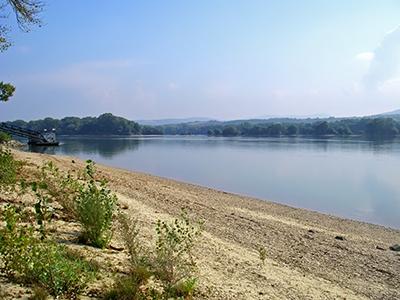
I had a long look at the beach beside the Donau, then started some water to boiling for tea and coffee. Life was good.
Photo: Don & Maria Hitchcock 23rd September 2008
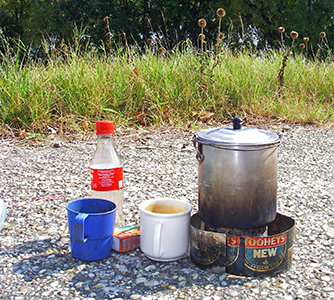
This is my setup for making tea and coffee and cooking a meal.
The blue silnylon bag you can just see the edge of on the left contains, one inside the other when not in use, the stove, support, windshield, my blue cup, a small coke bottle for methylated spirits (spiritus, alcohol), matches, the set of stoves (just the base of cut down aluminium drink cans, one inch high, one of small diameter from an energy drink, and one the standard 375 ml beer can) and the small cut down billy I use when I am making coffee just for myself.
The large billy shown here and Maria's white cup are stowed separately to the silnylon bag.
If we are both having tea, I put two cups of water in, a suitable amount of fuel, light it, put the billy on top of the support, and put the windshield from aluminium can sides (stapled together) around that.
In three or four minutes we have boiling water for tea. I blow out the stove, pour the excess fuel back in the bottle, and pack everything away.
I have cooked many meals on these stoves when we were at camp sites, on this trip, on later trips in Europe with Maria and also by myself, and on innumerable bushwalks in Australia and New Zealand for many, many years. The system works extremely well. The fuel is readily available and very cheap in Europe and elsewhere, the system is silent, economical, very light, almost no cost, easily replaceable, and since there are no jets to clog or pumps to fail, it always, always works, rain or shine. You could use, as I have for demonstration purposes, a metal egg cup, it works just as well.
When cooking a meal, I now use the metal cap from a scotch bottle as the stove, since this gives an even, low heat which cooks the meal without any danger of burning. One fill of the scotch bottle cap will boil up either a pre-prepared meal, or cook one you make from scratch, using, say, macaroni, water, onion, garlic, tuna, cheese and parmesan. The same effect of simmering using a low heat can be had by adding 25% water to the alcohol fuel with a larger stove.
When necessary, I fill the small travelling bottle of spiritus from my reserve, a larger bottle of spiritus kept in the bottom of my backpack.
Photo: Don & Maria Hitchcock 23rd September 2008
This shows the bits and pieces of the stove system spread out, packed up, and put away in a ditty bag, and without the larger billy I use when cycling with Maria.
Coffee billy in the foreground, the larger, somewhat battered meal billy towards the back. In 2020 I now use almost the same system, but with only a two inch high 'roundpod' or pot support, and without the circlet of aluminium inside the stove which acts as a 'virtual wick'. The virtual wick increases the power of the stove, but makes it hard to blow out.
The one inch gap between the top of the stove and the bottom of the pot seems to be the ideal compromise between a rapid boil and fuel economy.
Photo: Don Hitchcock 2009
Satellite dishes to receive television signals were ubiquitous in Eastern Europe.
Photo: Don & Maria Hitchcock 23rd September 2008
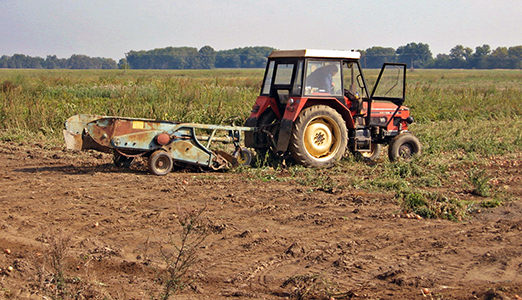
This tractor had a harvester hooked up behind which was digging what looks like onions, though the leaves are not those of onions.
The surrounding land was very flat, and no doubt fertile because of the occasional flooding from the river.
Photo: Don & Maria Hitchcock 23rd September 2008
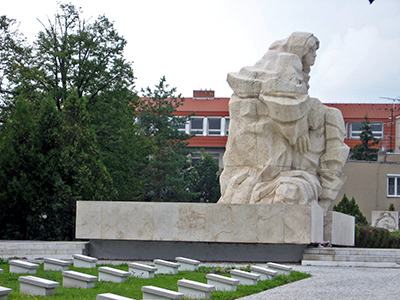
We reached Štúrovo at about 1500, and found this war cemetery near the centre of the city, next to the Roman-Catholic cemetery, for 5 200 Soviet soldiers and officers who fell in 1945. The cemetery contains mass graves as well as individual graves.
The statue is of a mother grieving over her slain son.
Photo: Don & Maria Hitchcock 23rd September 2008
Text: Adapted from https://www.tracesofwar.com/
We reached the edge of the Donau again, and were met by this magnificent vista, with pride of place going to the Esztergom Basilica, in Hungary, across the Donau.
Esztergom Basilica is the largest church in Hungary, and sits on Castle Hill. Its 72m-high central dome can be seen for many kilometres around. The building of the present neoclassical church was begun in 1822 on the site of its 12th-century counterpart, which was destroyed by the Turks.
József Hild, who designed the cathedral at Eger, was involved in the final stages, and the basilica was consecrated in 1856 with a sung Mass composed by Franz Liszt.
Photo: Don & Maria Hitchcock 23rd September 2008
Text: Adapted from https://www.lonelyplanet.com/
We crossed the Mária Valéria Bridge over the Donau, by this time a much larger river.
The sign on the bridge superstructure marked the border. Hungary became part of the EU in 2004, and became part of the Schengen area of Europe in 2007, when border controls were removed.
We then entered the city of Esztergom.
Photo: Don & Maria Hitchcock 23rd September 2008
We turned left towards the Basilica, and ten minutes later, on Kossuth Lajos street, we crossed on a pedestrian / cycle bridge from the island the main bridge goes to, onto the mainland.
We continued on past St Ignatius Church.
Photo: Don & Maria Hitchcock 23rd September 2008
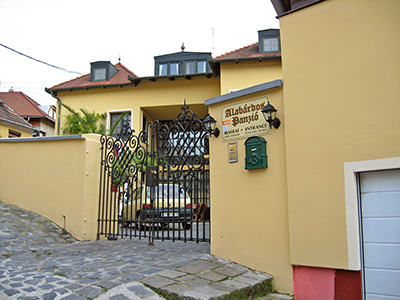
We then turned right, looking for the main drag to find a bank or an ATM to draw out money, and saw a sign to the Alabardos Pension . We went up a steep side street, and got a room for 11 560 Ft (or €48).
We unpacked the bikes and put them in a safe place, took our stuff up to the room, then went for a walk.
Photo: Don & Maria Hitchcock 23rd September 2008
We found Széchenyi Square, shown here, a lovely area named after the Hungarian statesman Count István Széchenyi de Sárvár-Felsővidék (21 September 1791 – 8 April 1860).
Photo: Don & Maria Hitchcock 23rd September 2008
Additional text: Wikipedia
The square had been refurbished in 2007, just the year before we visited. Many of the buildings were redecorated as well.
Széchenyi was a Hungarian politician, political theorist, and writer. Widely considered one of the greatest statesmen in his nation's history, within Hungary he is still known to many as 'the Greatest Hungarian'.
Photo: Don & Maria Hitchcock 23rd September 2008
Additional text: Wikipedia
The square was a very pleasant place to be. Ornamental grape vines had been trained into the shape of umbrellas, on a bamboo framework, providing, when we were there, a little shade in summer.
This was their first summer after planting, and they have now (2020) grown into a beautiful addition to the square, supported by much larger and stronger trellises, providing very ample shade on hot days in summer, and sun in winter.
Photo: Don & Maria Hitchcock 23rd September 2008
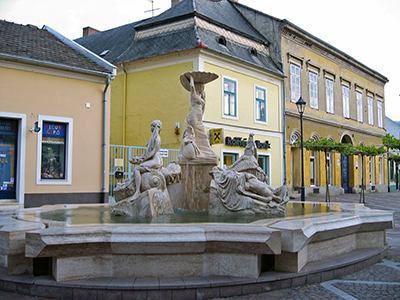
In 2007, during the renovation of Széchenyi Square, sculptor Péter Párkányi erected a Mediterranean-style composition of five life-size women.
The Ister Fountain rises from an eight-pointed, star-shaped, reflecting pool. It is made of limestone. The Donau river was known as the Ister in Ancient Greek.
Dimensions: the basin is 65 x 1000 x 750 cm, and the total height of the fountain is 380 cm.
Photo: Don & Maria Hitchcock 23rd September 2008
Additional text: https://www.kozterkep.hu/1501/ister-kut, Wikipedia
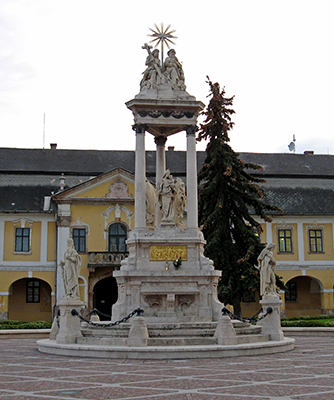
The Trinity statue in the middle of the square was completed in 1714 to commemorate the secession of an earlier plague. The once baroque statue was so much ruined by the end of the 19th century that the city had to have a new one made, sculpted of white limestone by György Kiss – which was inaugurated in 1908.
Photo: Don & Maria Hitchcock 23rd September 2008
Text: Wikipedia
The paving for the square was completely redone by master tilers.
Photo: Don & Maria Hitchcock 23rd September 2008
Ten minutes later it was starting to get dark, and it was time to eat. We found this restaurant in the square.
We enjoyed the meal, and since it was a lovely night, went for another walk after dinner.
Photo: Don & Maria Hitchcock 23rd September 2008
The cliffs, churches, and other buildings on Castle Hill are floodlit at night, and are a fine spectacle.
We then made our way back to the Pension for a good night's sleep.
Photo: Don & Maria Hitchcock 23rd September 2008
